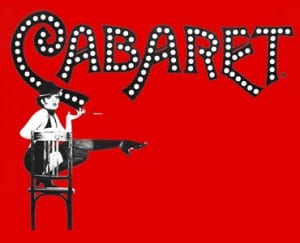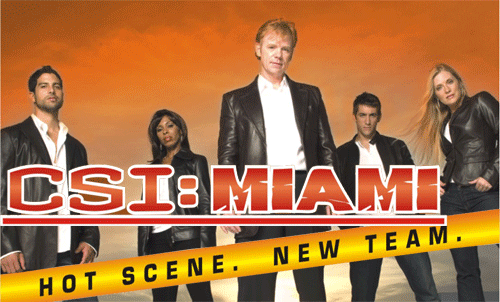America Is a Cabaret, Old Chum
Vhere are Your Troubles Now?
by Randy Shields
Ladies und gentlemen, willkommen to the Kit Kat Klub in beautiful Los Angeles, California where even za hood has palm trees! As you know, three weeks ago it was windy for two straight days and last week it was overcast and sprinkled briefly but we’ve talked it out, we’ve recovered and we’re ready to party again! Don’t let the sports on the giant plasma screens or the live dancers distract you from this book review. Stop texting for a moment and let me pour you a Tony Montana, a line of Whole Fools gluten-free, organic, totally vegan, absolutely fair-traded Bolivian marching powder. Vhere are your troubles now?
I just finished reading Robert Gellately’s Backing Hitler: Consent and Coercion in Nazi Germany. Published in 2001, the book’s central point, buttressed by diaries and newspaper accounts of the time, is that the German people knew exactly what the Nazis were doing and approved of it. Gellately makes clear that the Nazis were constantly calibrating what they could get away with with the German people and that, in the early years of the dictatorship anyway, dissent sometimes made a difference.
On many pages covering the early years of the dictatorship, one’s mind is constantly jumping back and forth between what the Nazis did and what’s been going on in America, not just since 9/11, but over the past 50 years. As Mark Twain said, history doesn’t repeat but it often rhymes.
Here’s a little stream of consciousness about the Nazis then and America now, inspired by Gellately’s book:
The Germans have the Reichstag fire, America has 9/11. In response, Hitler wraps up Germany with the Enabling Act and the all-purpose Reichstag Fire Decree. In America it’s the ready-made Patriot Act (the FBI wish list considered too reactionary to include in the plenty reactionary crime bills of 1994 and 1996), the Military Commissions Act and the National Defense (sic) Authorization Act. The police become more — to use Gellately’s words — “invasive, arbitrary and murderous.”
Flying down the autobahn or American highways, the signs of fascism are there but sometimes a blur: no left turns, selective terror, collective punishment, scapegoated minorities, the glorification of police and the military (film, television, sporting events.) The ruling class can’t compete intellectually for its collapsing social system so it resorts to the criminalization of dissent. The nation’s sacred founding texts must be abandoned. We’ve just had it confirmed, thanks to Edward Snowden, that the 3rd Amendment has been efficiently shit-canned along with the 4th, 5th, 6th and 8th as the NSA’s cerebral storm troopers are now “quartered” in our cell phones and computers.
“America, America show us the sign your children have waited to see…”
What’s that singing about — is it someone’s birthday? God, they look like Boy Scouts. OK, back to the book…
The Nazis don’t avoid the press but use it skillfully with photos of concentration camp inmates exercising and playing sports — think of embedded reporters and the “tropical paradise” with the “three square meals a day” that Gitmo’s defenders tell us about. The Nazis easily win over journalists — in the present, the most vicious critics of government whistleblowers are “journalists” like Jeffrey Toobin, David Gregory and Bob Schieffer. Gellately: “The press greets Dachau as bringing new hope for the Dachau business world.” An “economic turning point,” Germany’s “most famous place,” exclaims one newspaper. American communities compete for prison construction. We need jobs, we need half the population spying on and guarding the other half. See how America “works”? If it takes millions of people locked up to preserve capitalism, so be it.
Doctors jump wholeheartedly into the Nazi’s torture, euthanasia and genocide and now we have American doctors, psychologists and anthropologists who have assisted torture and indefinite detention. We see people doing anything for a little more comfort, a little more advancement. Hitler had The Triumph of the Will, we have bootlicking propaganda like The Hurt Locker, Zero Dark Thirty and The Fifth Estate. Of course, staying silent in the face of atrocities is always popular. A little terror goes a long way.
We see Hitler and other Nazi leaders, at the pinnacle of a gigantic murderous enterprise, taking time from their busy days to reverse punishments from judges out in the hinterlands. A purse snatcher is given ten years in prison and it somehow comes to Hitler’s attention and he has the man shot. In America, Rumsfeld makes suggestions about torture techniques on “detainees” and Obama has his Star Chamber terror Tuesday. Obama brags to aides in a new book that’s he’s “really good at killing people.” What’s the sense of being in power if you can’t be powerful and exercise your abominables?
The Nazis constantly legalize their crimes — and citizens, abandoning all critical thinking, go along with whatever is the almighty “law.” “Anyone who wanted to resist,” says Gellately, “was in the difficult position of having to act illegally.” “Inequality before the law was justified in the name of the anti-Communist (me: anti-terrorist) crusade.” “The new regime shifted the scales of justice away from the rights of citizens in favor of the powers of the police…” And Himmler (or is it Feinstein, McCain or Lindsey Graham cracker?) says: “Good citizens have nothing to worry about.”
“The morning will come when the world is mine…”
God, I wish those assholes would sit down and shut up. They’re so rude!
In June of 1934 the German people accept the first mass murder of the dictatorship: not of Communists or “asocials” or Jews but the summary execution of 100 Storm Troopers who were “moving too fast” even for Hitler. Nobody protested. The German people often “lead” the Nazis, keeping the Gestapo and Kripo busy by informing on neighbors, business and romantic rivals and even relatives for jealousy, revenge or financial gain. If you see something, say something, says Homeland Security, a bureaucracy that didn’t exist 12 years ago but now has 230,000 employees and 1.6 billion rounds of ammunition — five hollow-point bullets for every American. Why so many? Maybe they plan on committing wholesale “puppycide” also.
One of the architects of the new Nazi system of “justice,” Dr. Werner Best, says no lawyers should be allowed in court as the usual “procedural forms of the judiciary were totally inapplicable for the struggle against the enemies of the state under the current circumstances.” (“9/11 changed everything!” It got us in touch with our inner Eichmanns!) Dr. Best again: “In its struggle against clever, determined and ruthless enemies… to destroy an enemy whose behavior cannot be predicted (me: those crazy Muslims) — the Gestapo also cannot be bound by the letter of the law.” Reichdefermentmeister Dick Cheney’s dark side soul mate!
“There exists no private sphere anymore,” says Reichminister Hans Frank. Or was that Reichminister Keith Alexander? J. Edgar Hoover sends agent Edmund Patrick Coffey to visit Kripo headquarters in January 1938 and Coffey expresses his “great pleasure” about the Kripo and the rest of the police. This, after years of widely known atrocities. Gellately: “A never-ending series of crime and punishment stories was published during the Nazi era.” Like Mutual of Dick Wolf’s Wild Law and Order Kingdoms which enthrall white viewers with tales of the scary dark-skinned Other?
Journalist William Shirer, on ordinary Germans who saw nothing wrong with the destruction of Poland: “As long as the Germans are successful and do not have to pull in their belts too much, this will not be an unpopular war.” (As long as American troops aren’t getting killed, as long as we’ve got flying killer robots slaughtering brown people and paid for by government money printing… Sure, why not?)
“Tomorrow belongs, tomorrow belongs, tomorrow belongs to me!”
Shut the fuck up and sit down! You aren’t anybody! Shit doesn’t belong to you! Jesus! Sorry about that. This place just isn’t what it used to be…Hell, let me stand up and sing a song:
Google is IG Farben as Facebook is Siemens as Yahoo is Daimler as Microsoft is Krupp as Apple is BMW and these fascist collaborators past and present are altogether — yeah!
Yeah, I know, I’m tuneless but that doesn’t interfere with my enjoyment of singing. And speaking of Google, executive chairquisling Eric Schmidt is shocked, shocked that spying is going on — spying that the government didn’t let him in on for once! But what he really hates is other nations attempting to protect themselves from the NSA, warning that these governments might ”balkanize” the internet. As for the NSA, Herr Schmidt won’t “pass judgment” on it — instead, it’s the resisters to the NSA and Stasicon Valley who are the problem. He co-wrote a book with a former advisor to Condoleezza Rice – ripped apart by Julian Assange – that’s been praised by more war criminals (Henry Kissinger, Bill Clinton, Tony Blair, Madeleine Albright and Michael Hayden) than you can shake a Nuremberg noose at.
Gellately on Nazi surveillance: “Barrington Moore has pointed out that the ‘one prerequisite’ for expressions of disobedience to take place is that there be ‘social and cultural space’ which ‘provides more or less protected enclaves within which dissatisfied or oppressed groups have some room’, so that they can meet and talk and mobilize for action.” The government infiltrated the Occupy movement months before its first event and completely routed it within six months. America’s “freedoms” are bullshit — whenever they are tested, they face swift and spectacular smack downs: union organizing, protesting at political conventions (in cages, out of sight of the conventions), reporting on and documenting cruelty to animals (ag-gag laws, the Animal Enterprise Terrorism Act), being secure against unreasonable searches, having due process and adequate counsel, or freedom from cruel and unusual punishment (years in solitary confinement.) 75% of Americans want Medicare for all — and have for the last five decades — but despite us being so “free,” somehow, we can’t make that happen.
Back to the old-timey Nazis… Heydrich stresses the need to know the whereabouts of “the enemies of the state” in the event of war. The Gestapo begins arresting people in 1941 that they had listed on index cards from as far back as 1935 — nothing, of course, compared to the data storage center in Bluffdale, Utah. “Release of prisoners from protective custody will in general not take place during the war,” says one Nazi functionary, echoing the present day perpetrators of the never-ending war on/of terror. Both Hitler and Himmler “wanted to send anyone who committed three or four crimes to a concentration camp for good.” Four crimes — whoa, Hitler and Himmler were more lenient than 26 American states who lock people up and throw away the keys with three strikes laws! Be proud, America, you’re tougher than Nazis! Gellately: “The ‘community of the people’ and hence police considerations to protect it, took precedence over the rule of law and individual rights.” American fascism update: Blacks and Hispanics in NYC are not part of the “community of the people” so stop and frisk has been perfectly “legal.”
Also interesting are the contrasts between the Nazis and the American ruling class. At one point before the war, things are going so well for the Nazis that Hitler seriously considers disbanding the Gestapo. Is there any level of government in America that would entertain giving up any police power? Hitler also enacts numerous amnesties in the early years of the dictatorship with thousands of people released from incarceration. With the world’s greatest prison gulag, both in absolute numbers and percentage of the population, Barack Obama has pardoned a whopping 39 people in five years. Looking at many of their penny ante crimes, you might say it was “mighty white” of him. Meanwhile, Obama and the fascist edifice that he fronts won’t give the 74-year-old cancer-stricken Lynne Stewart a compassionate release because she dared to defy that edifice and so must be crushed, as Chelsea Manning must be crushed, as truth and justice must be crushed by the immutable moral “rightness” of money, that clinking clanking stinking skanking sound that makes the world go round, as codified in Citizens United and numerous other fascist-friendly Supreme Court decisions.
It might be protested: “We can’t have fascism in America — we don’t have any concentration camps or mass executions.” My answer: We have as many prisons and torturous “Control Units” as the ruling class needs. The ruling class doesn’t need mass executions because the “homeland” is thoroughly pacified and conquered. Instead, America’s obvious fascism is projected beyond its borders — it doesn’t have any borders, really — with 1,000 worldwide military installations, JSOC death squads operating in 75 nations, drones taking the place of armies (as we never really “withdraw”) and no appreciable domestic opposition to any of it. Explain to the parents of Pakistani children blown to bits by our drones or the detainees held for years in black sites without charge or trial that the American people don’t support fascism.
It might be protested: “But Hitler killed six million Jews and others!” Yes — and he was also responsible for 15-20 million civilian deaths in the Soviet Union. America’s leaders, however, spread out the corpses over decades: hundreds of thousands of Koreans, three million Southeast Asians, a million Iraqis, and millions more in proxy wars in Africa (six million alone in the Congo) and Latin America. “Good Americans” tell themselves — if they think of it at all — that the millions of innocents our government kills are “accidents,” “tragic mistakes,” “unavoidable,” and “collateral damage.” We don’t mean to kill millions of innocent people decade after decade — things just go wrong. Unless, of course, we’re playing the sanctions home game with Madeleine “The Price is Right” Albright and 500,000 dead Iraqi children — then we think it’s “worth it.”
It might be protested: “But there is no charismatic leader.” True — the quality of capitalism’s shills is very low and they are widely loathed. And that’s a good thing — witness what the ruling class gets away with when they have silver-tongued dissemblers like Clinton (NAFTA) and Obama (NDAA) working for them. (Here’s hoping, with Obama, that we’ve reached peak mystification.) But America hasn’t had its humiliation years like Weimar Germany — yet. Suppose we lose our reserve currency status, interest rates soar as does unemployment and tens of millions more Americans are out of work. (When Hitler came to power, 40% of Germans were out of work.) At that point some tough-talking confident pseudo-populist telling us that… oh, I don’t know… Canada and Panama are the cause of all our problems and he has a plan to regain our former “greatness” — well, that might be music to many ears.
It might be protested: “But we don’t have Hitler’s evil racist ideas.” (Set aside that he got most of them from the American eugenics movement.) My answer: we have enough of our own racist ideas to last us a good long while, we have 500 years of white hatred and violence toward people of color. The collective punishment of stop and frisk is one strand in an ever-spun web of fascism against blacks encompassing police brutality and summary executions, mass incarceration, racist sentencing disparities and applications of the death penalty (itself a tool of class terror), redlining, gentriciding (hey, it’s not just for Palestinians!), the CIA letting the Contras smuggle cocaine into major American cities in the 1980s and fueling a devastating epidemic (see Gary Webb’s Dark Alliance), the racist salvos from nearly every Scapegoater-in-Chief in my lifetime about “welfare queens,” “big bucks,” various Sister Soulja moments, “ethnic purity” and “black intrusion” (hardly anybody remembers peanut Carter’s multiple infractions) all the way up to Barack Go ‘Bama who, in one of his many magical speeches of misdirection (they’re always for white people), scolded black fathers on Father’s Day with his imaginary ideas about their real lives, and then we can take the way back machine to the infiltration and disruption of black leftist groups (the picked-on-first Communists in the Nazi analogy), culminating in the selective terror of targeted assassinations of their most powerful speakers and leaders. And all of the preceding happened just since the Civil Rights Act of 1964 which was supposed to kickstart “equality.” And through it all, white America, the “good Americans” in this case, mostly wondered: “What’s the fucking problem? Slavery’s over.”
Godwin’s law says that whoever first brings up the Nazis to win an argument loses immediately. I like Godwin’s law but here’s another one that ought to be remembered: whoever brings up the Nazis last usually gets turned into a lampshade. Looking around the Kit Kat Klub, though, I think most of us made up our minds back in Chelsea that, when we go, we’re going like Elsie.
Randy Shields can be reached at music2hi4thehumanear@gmail.com.Read other articles by Randy, or visit Randy’s website.


